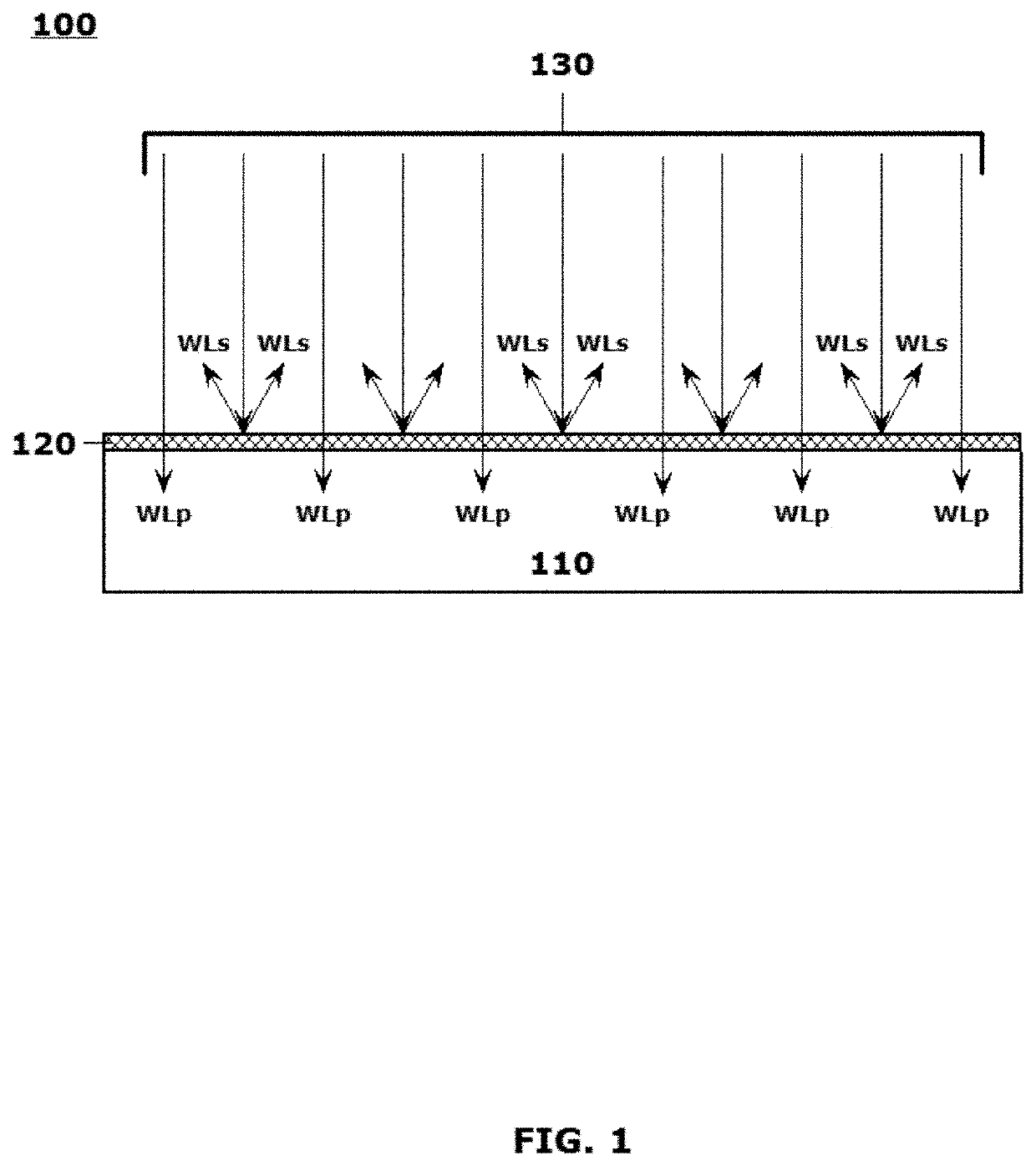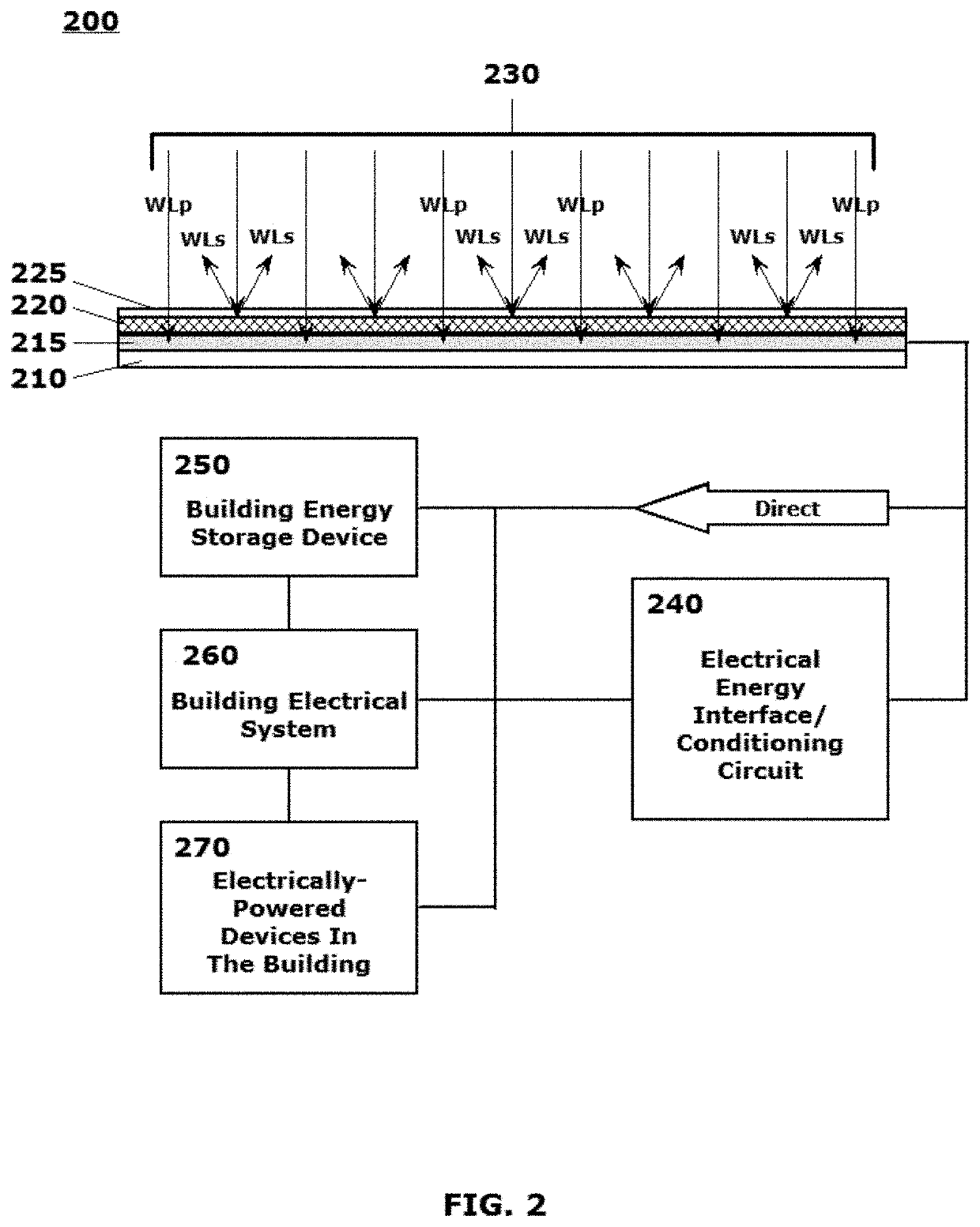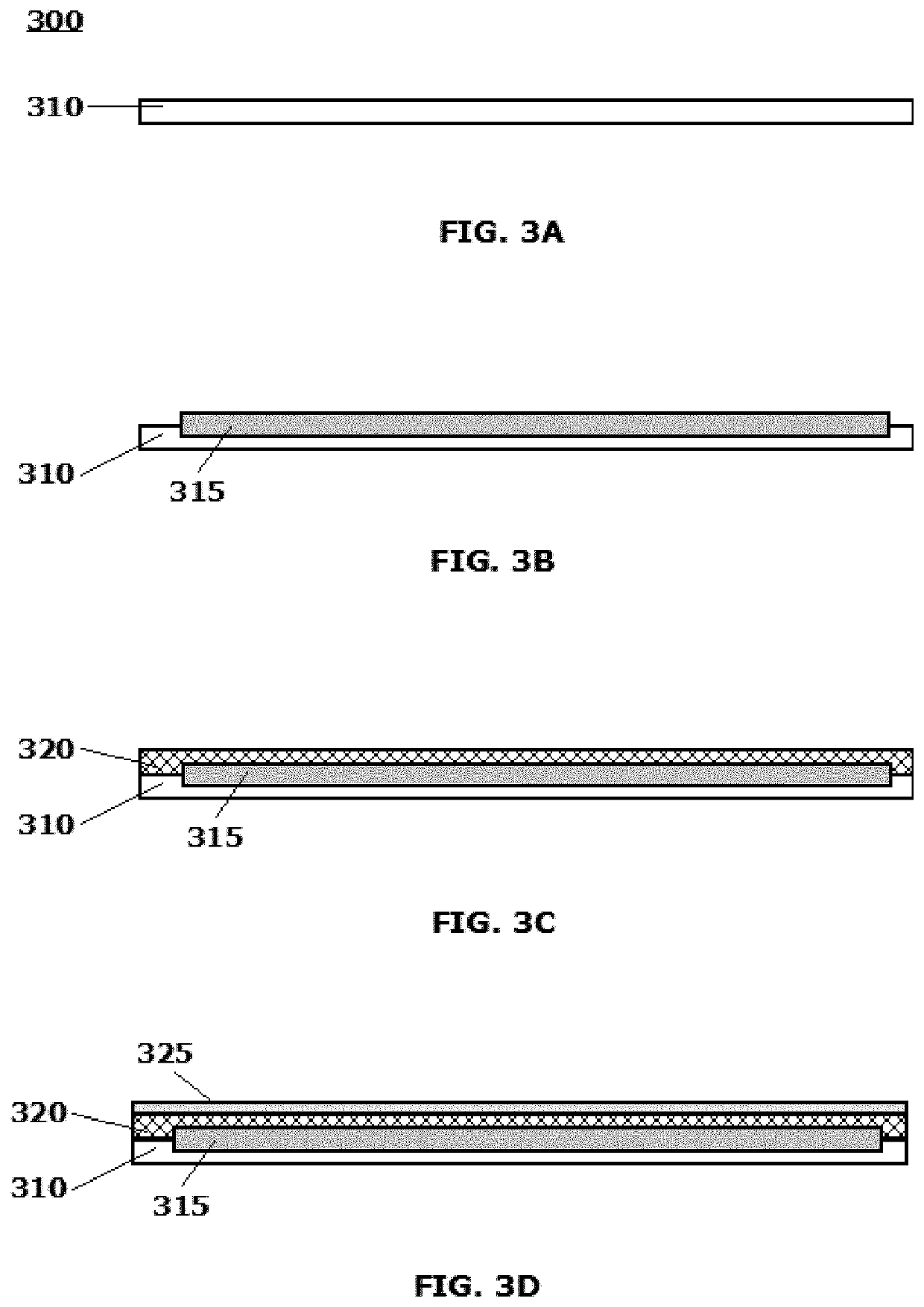Energy harvesting systems for providing autonomous electrical power to building structures and electrically-powered devices in the building structures
a technology of energy harvesting and building structure, which is applied in the direction of photovoltaic supports, light radiation electric generators, generators/motors, etc., can solve the problems of significantly less efficiency of layers, degrading their operation, and unacceptably adversely affecting the aesthetics of structures, etc., to achieve the effect of “tricking” the human eye and superior light transmission
- Summary
- Abstract
- Description
- Claims
- Application Information
AI Technical Summary
Benefits of technology
Problems solved by technology
Method used
Image
Examples
Embodiment Construction
[0002]This disclosure is directed to a unique set of structural features on outer surfaces of, building structures, and on structural components within buildings, the structural features combining to implement an aesthetically neutral, or aesthetically pleasing, energy harvesting system that provides autonomous electrical power to the building structures on which the system is installed, and / or to electrically-powered devices in those buildings. Color-matched, image-matched and / or texture-matched optical layers, which provide an essentially same appearance from any viewing angle, and provide superior light transmission across the range of light impingement angles, are formed over energy harvesting components, including photovoltaic components.
2. Related Art
[0003]U.S. patent application Ser. No. 15 / 006,143 (the 143 application), entitled “Systems and Methods for Producing Laminates, Layers and Coatings Including Elements for Scattering and Passing Selective Wavelengths of Electromagn...
PUM
| Property | Measurement | Unit |
|---|---|---|
| diameter | aaaaa | aaaaa |
| diameter | aaaaa | aaaaa |
| diameters | aaaaa | aaaaa |
Abstract
Description
Claims
Application Information
 Login to View More
Login to View More - R&D
- Intellectual Property
- Life Sciences
- Materials
- Tech Scout
- Unparalleled Data Quality
- Higher Quality Content
- 60% Fewer Hallucinations
Browse by: Latest US Patents, China's latest patents, Technical Efficacy Thesaurus, Application Domain, Technology Topic, Popular Technical Reports.
© 2025 PatSnap. All rights reserved.Legal|Privacy policy|Modern Slavery Act Transparency Statement|Sitemap|About US| Contact US: help@patsnap.com



